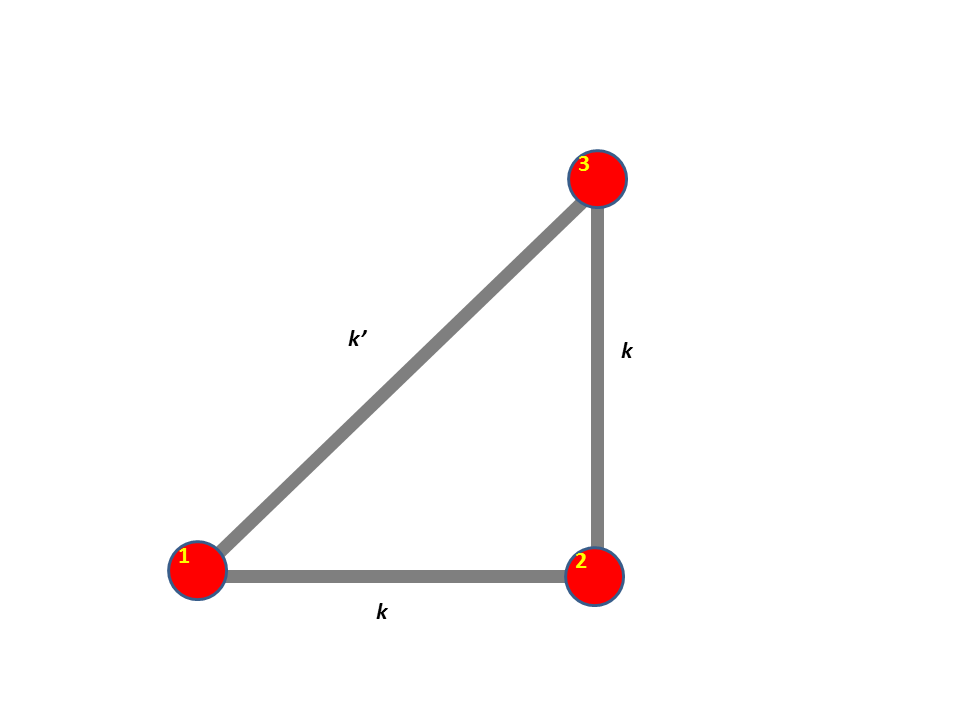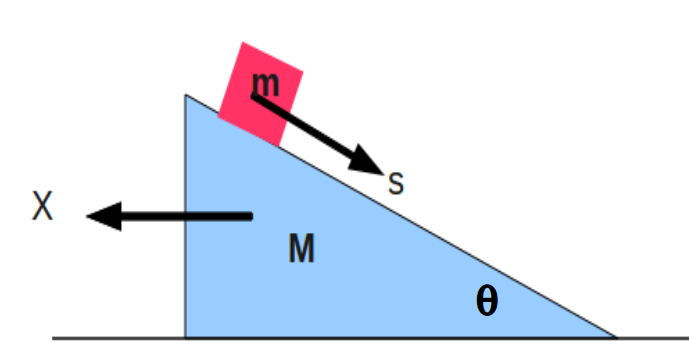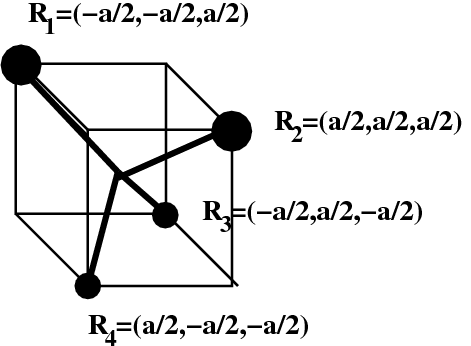
| MWF 10 AM-10:50 AM | OPL 103 | http://www.wfu.edu/~natalie/f19phy711/ |
| Instructor: Natalie Holzwarth | Phone:758-5510 | Office:300 OPL | e-mail:natalie@wfu.edu |
| Date | F&W Reading | Topic | Assignment | Due | |
| 1 | Mon, 8/26/2019 | Chap. 1 | Introduction | #1 | 8/30/2019 |
| 2 | Wed, 8/28/2019 | Chap. 1 | Scattering theory | #2 | 9/02/2019 |
| 3 | Fri, 8/30/2019 | Chap. 1 | Scattering theory | #3 | 9/04/2019 |
| 4 | Mon, 9/02/2019 | Chap. 1 | Scattering theory | #4 | 9/06/2019 |
| 5 | Wed, 9/04/2019 | Chap. 2 | Non-inertial coordinate systems | #5 | 9/09/2019 |
| 6 | Fri, 9/06/2019 | Chap. 3 | Calculus of Variation | #6 | 9/11/2019 |
| 7 | Mon, 9/9/2019 | Chap. 3 | Calculus of Variation | #7 | 9/13/2019 |
| 8 | Wed, 9/11/2019 | Chap. 3 | Lagrangian Mechanics | ||
| 9 | Fri, 9/13/2019 | Chap. 3 | Lagrangian Mechanics | #8 | 9/16/2019 |
| 10 | Mon, 9/16/2019 | Chap. 3 & 6 | Constants of the motion | #9 | 9/20/2019 |
| 11 | Wed, 9/18/2019 | Chap. 3 & 6 | Hamiltonian equations of motion | ||
| 12 | Fri, 9/20/2019 | Chap. 3 & 6 | Liouville theorm | #10 | 9/23/2019 |
| 13 | Mon, 9/23/2019 | Chap. 3 & 6 | Canonical transformations | ||
| 14 | Wed, 9/25/2019 | Chap. 4 | Small oscillations about equilibrium | #11 | 9/30/2019 |
| 15 | Fri, 9/27/2019 | Chap. 4 | Normal modes of vibration | #12 | 10/02/2019 |
| 16 | Mon, 9/30/2019 | Chap. 7 | Motion of strings | #13 | 10/04/2019 |
| 17 | Wed, 10/02/2019 | Chap. 7 | Sturm-Liouville equations | #14 | 10/07/2019 |
| 18 | Fri, 10/04/2019 | Chap. 7 | Sturm-Liouville equations | ||
| 19 | Mon, 10/07/2019 | Chap. 7 | Fourier transform methods | ||
| 20 | Wed, 10/09/2019 | Chap. 1-4,6-7 | Review | ||
| Fri, 10/11/2019 | No class | Fall break | |||
| Mon, 10/14/2019 | No class | Take-home exam | |||
| Wed, 10/16/2019 | No class | Take-home exam | |||
| 21 | Fri, 10/18/2019 | Chap. 7 | Contour integrals; Exam due | #15 | 10/23/2019 |
| 22 | Mon, 10/21/2019 | Chap. 7 | More about contour integrals | ||
| 23 | Wed, 10/23/2019 | Chap. 5 | Rigid body motion | #16 | 10/25/2019 |
| 24 | Fri, 10/25/2019 | Chap. 5 | Rigid body motion | #17 | 10/28/2019 |
| 25 | Mon, 10/28/2019 | Chap. 8 | Elastic two-dimensional membranes | #18 | 11/01/2019 |
| 26 | Wed, 10/30/2019 | Chap. 9 | Mechanics of 3 dimensional fluids | ||
| 27 | Fri, 11/01/2019 | Chap. 9 | Fluid mechanics | #19 | 11/04/2019 |
| 28 | Mon, 11/04/2019 | Chap. 9 | Sound waves | ||
| Wed, 11/06/2019 | No class | NAWH out of town | |||
| 29 | Fri, 11/08/2019 | Chap. 9 | Sound waves; Project Topic due | #20 | 11/11/2019 |
| 30 | Mon, 11/11/2019 | Chap. 9 | Non-linear waves and shocks | #21 | 11/15/2019 |
| 31 | Wed, 11/13/2019 | Chap. 10 | Surface waves in water | #22 | 11/18/2019 |
| 32 | Fri, 11/15/2019 | Chap. 10 | Surface waves -- non linear effects | ||
| 33 | Mon, 11/18/2019 | Chap. 11 | Heat conduction | #23 | 11/22/2019 |
| 34 | Wed, 11/20/2019 | Chap. 12 | Effects of viscosity on fluid dynamics | ||
| Fri, 11/22/2019 | Class cancelled | ||||
| 35 | Mon, 11/25/2019 | Review Chap. 1-12 | |||
| Wed, 11/27/2019 | Thanksgiving holiday | ||||
| Fri, 11/29/2019 | Thanksgiving holiday | ||||
| Mon, 12/2/2019 | Presentations I | ||||
| Wed, 12/4/2019 | Presentations II | ||||
| Fri, 12/6/2019 | Presentations III |
|
Read Chapter 1 in Fetter & Walecka.
Read Chapter 1 in Fetter & Walecka.
Continue reading Chapter 1 in Fetter & Walecka.
Read Chapter 2 in Fetter & Walecka.
Start reading Chapter 3, especially Section 17, in Fetter & Walecka.
|
|
|
|
|

Continue reading Chapters 3 and 6 in Fetter & Walecka.
Start reading Chapter 4 in Fetter & Walecka.
Finish reading Chapter 4 and start Chapter 7 in Fetter & Walecka.

| (1) |
| (2) |
| (3) |
Continue reading Chapter 7 in Fetter & Walecka.
Consider the Sturm-Liouville equation with τ=1 and σ=1 for the interval 0 ≤ x ≤ 1 and the boundary values df(0)/dx=df(1)/dx=0.
|
Start Chapter 5 in Fetter & Walecka.

the above figure shows an object with four particles held together with massless bonds at the coordinates shown. The masses of the particles are m1=m2 ≡ 3m and m3=m4 ≡ m.
Continue reading Chapter 5 in Fetter & Walecka.
Read Chapter 8 in Fetter & Walecka.
Read Chapter 9 in Fetter & Walecka.
Continue reading Chapter 9 in Fetter & Walecka.
Finish reading Chapter 9 in Fetter & Walecka.
Start reading Chapter 10 in Fetter & Walecka.
Start reading Chapter 11 in Fetter & Walecka.
T(x,y,z,0) = T0(1 + sin(πx/a)).
At what later time t does the rectangle achieve a uniform temperature T0 with a 10 % fluctuation when the rectangle is made of